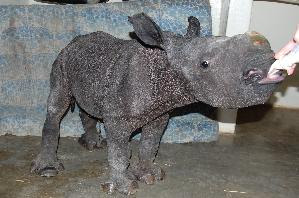 Humans are always in a mad rush… running the big race to get ahead… fighting against time and always thinking of ways to make their lives easier. As the human race has grown in technology, fast-paced, and chemical lifestyle so has the amount of rubbish and pollution increased in response to their daily demands. We are injecting crops to make them stronger, forcing them to grow faster and then we coat them with mists of chemicals to stop the insects and rodents from snatching a quick meal.
Humans are always in a mad rush… running the big race to get ahead… fighting against time and always thinking of ways to make their lives easier. As the human race has grown in technology, fast-paced, and chemical lifestyle so has the amount of rubbish and pollution increased in response to their daily demands. We are injecting crops to make them stronger, forcing them to grow faster and then we coat them with mists of chemicals to stop the insects and rodents from snatching a quick meal.We raise animals for our plates and to stop the “vermin” and other predators from sampling these tasty “takeaways” we lay carcasses out laced with toxic cocktails of poisons. These lethal combinations are seen as an easy way to eradicate annoying pests from depleting the numbers of these expensive livestock. We generate tons and tons of garbage which chokes up the land it is laid to rest on. Layers and layers of non-degradable materials heaped higher and higher leaking foul smelling and disastrous combinations of chemicals and gases into the surrounds.
And then… we are shocked when we see the effects of our “fruitful labours”.
We received a call from someone in the surrounding area… they had come across a rasp of guinea fowl. They were all lying down and were unable to move. The people who found them were under the impression that they had ingested poison.The guinea fowl were rushed over to us at Moholoholo Wildlife Rehab Centre where it was confirmed that yes; they had indeed been victim of poisoning.
 They had to be stabilized immediately! Liquids were administered by means of inserting a tube down the throat and injecting the liquids through the tube. The guinea fowl were too weak to feed themselves so they had to be force-fed mealworms and flying ants. This does not sound like too big a deal but when there are 18 of them that require equal attention this is a very time consuming task. To be added to this the guinea fowl had to be attended to every 3 hours for their first couple of days. They were in a terrible state!
They had to be stabilized immediately! Liquids were administered by means of inserting a tube down the throat and injecting the liquids through the tube. The guinea fowl were too weak to feed themselves so they had to be force-fed mealworms and flying ants. This does not sound like too big a deal but when there are 18 of them that require equal attention this is a very time consuming task. To be added to this the guinea fowl had to be attended to every 3 hours for their first couple of days. They were in a terrible state!
They seemed to lack any form of energy and some were making a ghastly gurgling noise. It seemed that, for some, it was touch and go.
Perseverance and persistence are the key to any battle! With the help of a handful of our more experienced volunteers who are studying veterinary science and completed vet nursing degrees, we managed to get them on the right track.
Some bounced back more quickly than others but eventually the hard work and dedication paid off and all 18 guinea fowl were standing, pecking seed and generally doing what guinea fowl usually do. After being kept under observation to ensure there were no relapses we decided that they were good to go!
 Their legs were ringed to allow us to identify them and they were loaded carefully into release cages. Once they were settled in these cages they were driven towards the dam on the farm.
Their legs were ringed to allow us to identify them and they were loaded carefully into release cages. Once they were settled in these cages they were driven towards the dam on the farm. It was most definitely a case of “ready… set… go” with the guinea fowl flying out to meet their freedom. A little snack was sprinkled around for them which, after a circuit of investigation, they pecked at enthusiastically. They seemed to settle in immediately and appeared to be delighted to be out in the fresh air again.We will keep a watchful eye on them but hopefully we will be free from the worry of them being exposed to such a terrible ordeal as a result of poisoning.
 People need to be more aware of the effect they are having on our existing wildlife. We need to break free from the “out of sight, out of mind” perspective and look at the bigger picture. We need to ask ourselves: what actions may I take to help make a difference, no matter how small?
People need to be more aware of the effect they are having on our existing wildlife. We need to break free from the “out of sight, out of mind” perspective and look at the bigger picture. We need to ask ourselves: what actions may I take to help make a difference, no matter how small?














































